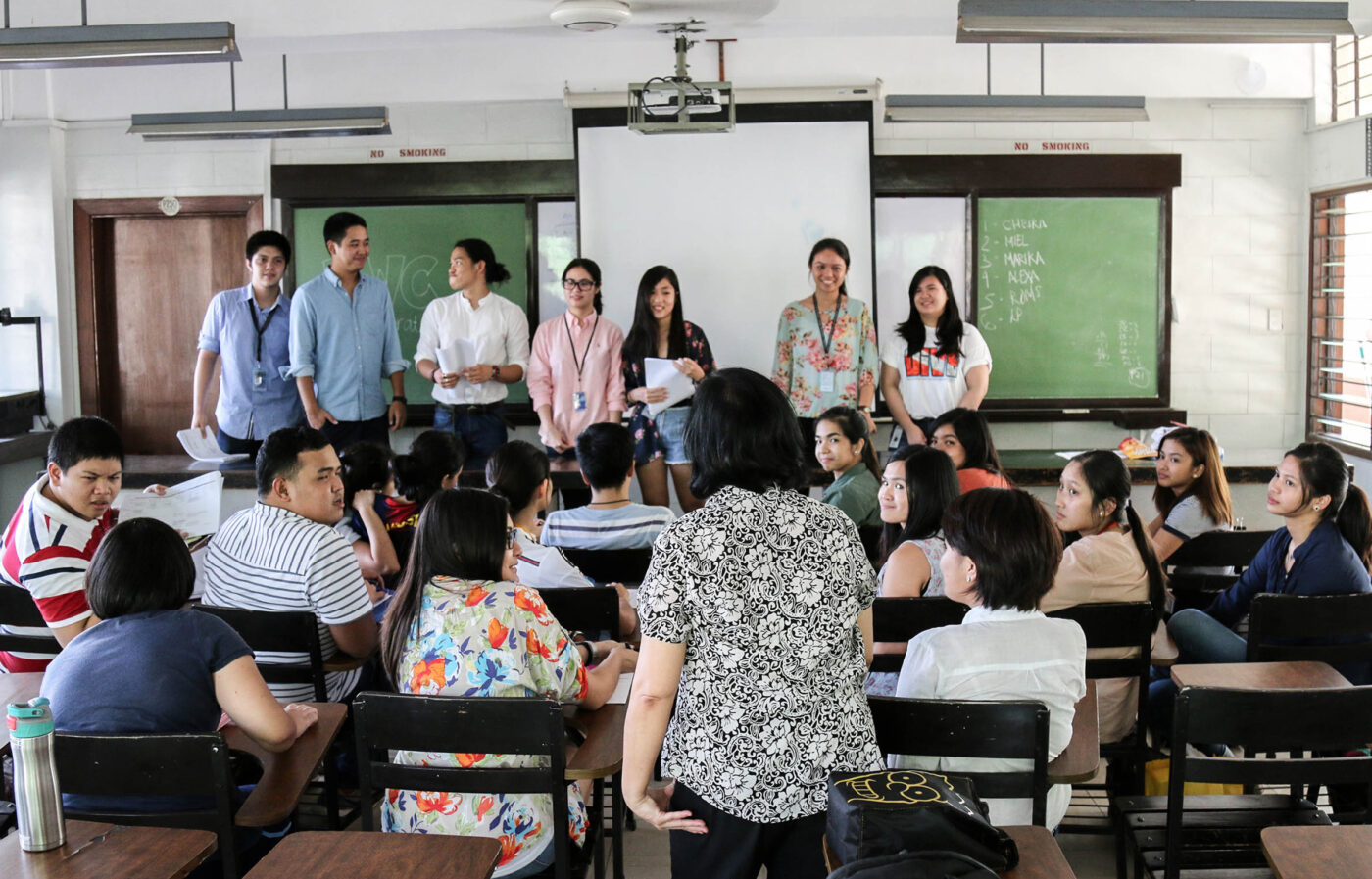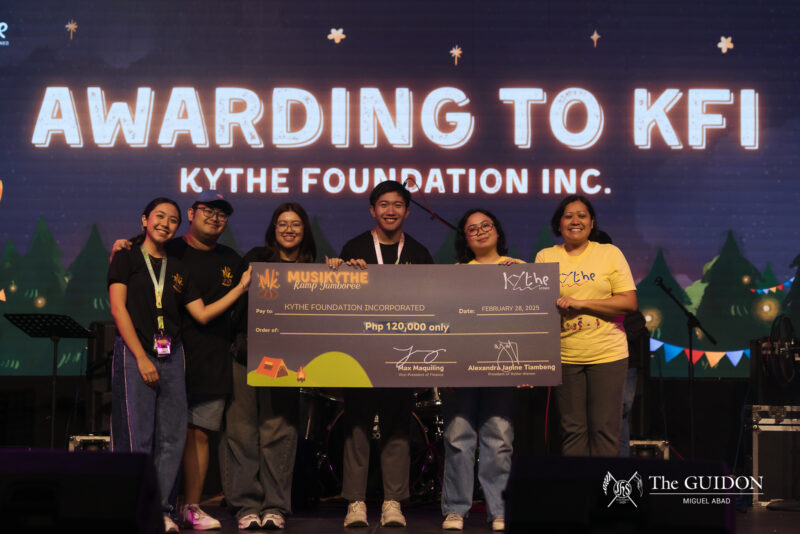THE ACADEMIC calendar shift has taken full effect in the Ateneo and has prompted university-wide adjustments this school year (SY) 2015-2016.
The new academic calendar spans from August to May instead of from June to March, synchronizing the Ateneo’s calendar with international institutions.
SY 2015-2016 officially began during the summer term dubbed as Intersession, which spanned from June 8 to July 16. The first semester will span from August 10 to December 12 and the second semester from January 18 to May 21.
According to Assistant to the Vice President for University and Global Relations (VPUGR) Maria Santos, while the first year of the new academic calendar is underway, the university “is still in the process of completing the shift.”
The Office of the VPUGR implements strategic initiatives to enable the university to operate in a global environment.
Santos also said that two technical transition teams are continuously studying the collective impact of the shift on the university. One transition team oversees the Loyola Schools (LS) while the other handles the Professional Schools.
The LS transition team is led by Assistant to the Vice President for the Loyola Schools (VPLS) Milagros Tendero while the Professional Schools transition team is led by School Registrar Julian Agtarap.
“[The teams] have been and still are hard at work to effect a smooth transition,” Santos added.
Admissions
Office of Admission and Aid (OAA) Director Jumela Sarmiento, PhD pointed out that the OAA maintains the same schedule despite the calendar shift, as most high schools’ academic calendars still span from June to March.
The application period for incoming freshmen in SY 2016-2017 is from June 22 to August 18, and the Ateneo College Entrance Test will be held on September 19. Application results will be released in January 2016.
Sarmiento said that the OAA offered non-credit freshman preparatory courses from June 8 to July 16 in English, Math, Filipino, and Foreign Languages to “give an incoming Atenean a taste of student life in the Ateneo.”
Sarmiento further clarified that the expected drop in freshman enrollment in SY 2016-2017 and SY 2017-2018 “is not related to the calendar shift.”
She explained that the drop is due to the implementation of the Kindergarten to Grade 12 system, which mandates an additional two years of senior high school to previously qualified Grade 10 graduates.
Academics
With the calendar shift, SY 2014-2015 John Gokongwei School of Management (JGSOM) Junior Term Abroad Coordinator (JTA) Aldo Tong believes “Ateneo will become more and more international.”
He said the synchronized calendar has led to more opportunities for students to study abroad, citing an increase in available summer term abroad programs and study tours.
“Ateneo is doing its best to craft more programs to increase the international exposure of its students,” Tong added.
Tong said that that the synchronized calendar “has made it easier [for a student] to go on a junior term abroad” as schools can now choose whether to send their students during fall term, which spans from August to December, or during spring term from January to May.
However, Tong said that the calendar shift may prompt further adjustments to the JTA curriculum of JGSOM, such as moving core subjects taken in junior year to sophomore year.
On the other hand, Associate Dean for Graduate Programs Celeste Gonzalez, PhD said that the calendar shift has also led to more opportunities for faculty exchange as the university can now invite guest lecturers from foreign universities.
Organizational activities
From the standpoint of the Office of Student Activities (OSA), Director Christopher Castillo believes that organizations’ transitions to the new calendar have been going smoothly.
OSA is the university’s administrative office that oversees student development in organizational activities.
Castillo said that faith-formation cluster organizations and sector-based cluster organizations have formulated their own respective strategies as to how to deal with public school partners still following the June-March calendar.
He added that the aforementioned organizations were cleared to engage with their public school partners during the Intersession.
Castillo also mentioned that OSA and the Council of Organizations of the Ateneo (COA) conducted a transition seminar-workshop on May 16 where accredited organizations reviewed the impact of the shift on student activities.
COA is the Ateneo’s confederation of accredited student organizations.
During the seminar-workshop, organizations realized the constraints posed by the shift, hence the need to remove certain activities and reschedule others to avoid schedule and venue conflicts.
Castillo shared that the workshop led to opportunities for organizations to merge activities and explore partnerships based on common rationale.
Moreover, COA President Iesous Hernandez said that the workshop and the April-May interlude allowed organizations “to do a lot more thinking and rethinking about their core competencies and advocacies, how [they] can maximize the [school] year and how they can serve their respective communities better.”
To provide leeway for caroling activities in December and preparations for the 2016 national elections in May, Acting VPLS Maria Vilches, PhD issued a memorandum on June 24.
According to the memorandum, the moratorium period for student activities is adjusted from two weeks to one week before final examinations. The moratorium for the first semester will be observed from December 1 to 12 while the second semester moratorium will be from May 10 to 21, 2016.
Castillo pointed out, however, that the moratorium “is not final” and will be evaluated at the end of the year.
Challenges ahead
For Santos, while transitions to the new calendar have been manageable so far, “it is almost certain that there are challenges that will emerge.”
Santos explained that the university still needs to address concerns with regards to expected class disruptions due to inclement weather during Intersession and the expected heat during summer months in the second semester.
From an administrative standpoint, Santos also cited challenges in adopting a new fiscal year, adjusting to licensure exams schedules and government deadlines, and revising performance evaluation cycles for faculty members.
In addition, Castillo said that “as much as there are projections on what might happen, [the calendar shift] is still largely an experiment.”
According to Castillo, the calendar shift causes a seasonal shift in student activities, specifically a decline in Christmas-related activities due to looming final examinations.
Both agree, however, that these challenges are not insurmountable.
Castillo said that “student activities is the area where ideas can be very robust and creative,” hence, challenges can be converted into opportunities for organizations.
Moreover, Santos is confident that “with the inventiveness of the Ateneo community, we will be able to find solutions.”







